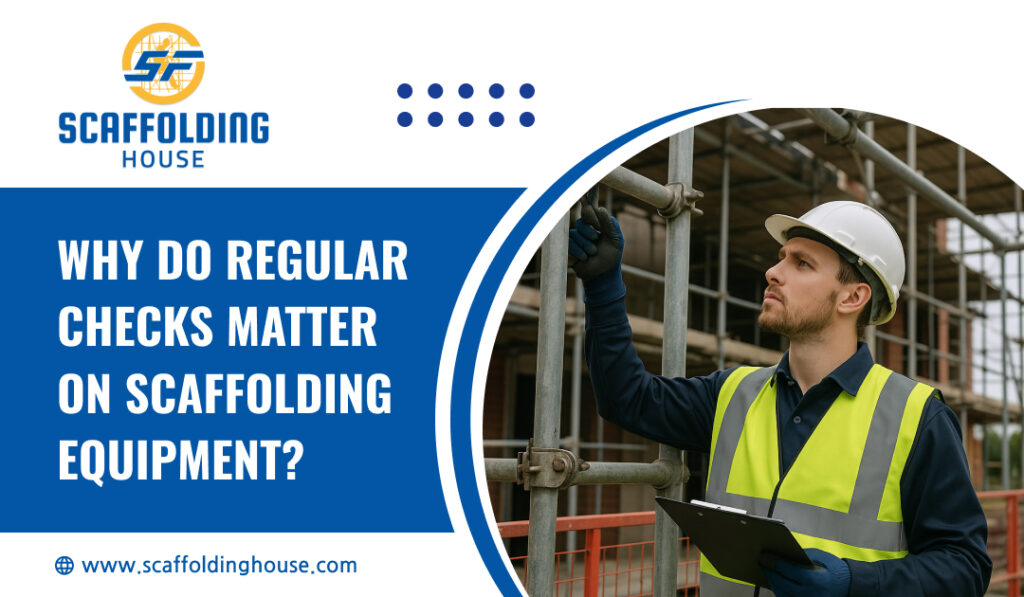If you run a construction company, you know the significance of regular checkups of scaffolding equipment to ensure the safety of workers and scaffolds. Scaffolds enable workers to reach heights and perform work efficiently. However, with regular inspection and maintenance of scaffolding equipment, you can reduce the chance of scaffold collapse. There are several reasons to do regular checks on scaffolding equipment. From base jack scaffolding to mobile tower scaffolds and various types of clamps, every component of a scaffold must be installed properly.
Significance of Scaffolding in Construction
Before we discuss the importance of regular checks on scaffolding components, it’s crucial to understand why scaffolding is important in construction. Scaffolding is not just a temporary framework, it is an essential part of the construction industry that ensures efficiency and safety.
- They offer a secure platform for workers to perform tasks at heights, reducing the risks of working from unstable surfaces or ladders.
- Scaffolds give workers convenient access to different areas, simplifying workflow and improving overall productivity.
- By ensuring that scaffolding is installed correctly, construction companies can create a safe working environment while allowing smooth operations on the job site.
Why is It Important to Inspect Scaffolds Frequently?
Now that you are aware of the significance of using scaffolding systems in the construction industry. They need regular inspection and maintenance to ensure the safety of the workers. This is crucial for addressing possible risks and ensuring compliance with regulations. Here are the main reasons to conduct a scaffold inspection:
- Prevent Accidents
Regular inspection can help you spot possible risks such as loose parts, structural weaknesses, or improper assembly. By identifying these issues, the risk of injuries and accidents is reduced.
- Compliance with Regulations
Scaffolding needs to follow regulations and certain rules.
- They must be installed, altered, and disassembled only by trained persons.
- After any event intended to impact the stability of scaffolds, additional inspection is required.
- It’s essential to keep track of inspections, and they must be available to relevant parties.
- Structural Integrity
Thorough inspection is important to check the overall integrity and stability of scaffolding structures. This is essential, especially after modifications or adverse weather conditions, to ensure the scaffold can support workers and materials safely.
- Identification of Wear and Tear
Over time, scaffolding parts can experience wear and tear. Frequent checks can help you spot damaged planks, weakened joints, or worn-out guardrails. From small wing nut bolts, anchor nuts to mobile towers, every component of the scaffold must be checked for wear and tear. Frequent replacements or repairs maintain structural integrity and avoid further deterioration.
- Reducing Downtime and Costs
Effective maintenance practices can extend the lifespan of scaffolding systems, minimizing the need for frequent repairs or replacements. This reduces downtime and repair costs, improving overall profitability and efficiency.
- Increase Safety
Frequent maintenance and inspections increase safety on construction sites. By focusing on these practices, employers fulfil their commitment to worker well-being.
Keep Track of Maintenance History
Detailed records of repairs, inspections, and modifications help monitor the scaffolding’s condition over time. This detailed documentation is crucial for the right decision-making and addressing recurring issues.
Steps for Scaffolding Inspection
Now, you might be looking for the steps to inspect scaffolding systems. Follow the steps given below to conduct a scaffolding inspection:
- Visual examination: You can conduct a visual examination of all components of scaffold systems.
- Assess stability: Make sure to check if the scaffold is properly supported.
- Inspect joint connections: Don’t forget to check connections, like all joints, fixings, and couplers, for security.
- Check the platform: Evaluate the condition of working platforms to increase security.
- Load assessment: Make sure that the scaffold doesn’t exceed its load capacity and keep checking the weight limits.
- Environmental factors: Pay attention to weather conditions and their effect on the safety of scaffolds.
Conclusion
The blog shares the significance of regular checkups of scaffolding equipment along with the steps to inspect them. When you choose or buy scaffold components, make sure to buy from a trusted company, like Scaffolding House, to ensure the quality of the products. We offer the best quality products to ensure safety throughout the construction project.

